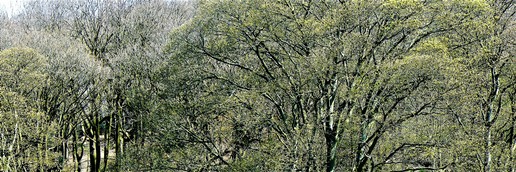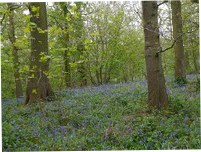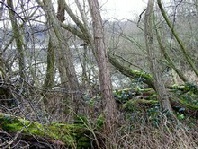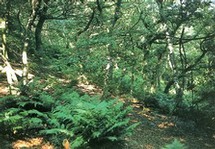

Biodiversity
Action
Plan

Woodlands are one of the most treasured parts of the Barnsley landscape. The carpets of spring flowers in many of our ancient broad-leaved woodlands are a breath-taking sight.

Woods and their trees, undergrowth and leaf litter, are important for wildlife for food, nesting and roosting, shelter and a refuge from predators. They support fungi, lichens, mosses and ferns; flowering plants; butterflies, moths and other invertebrates; bats and foraging mammals; and of course birds.
Priority woodland habitats. There are five national woodland priority habitats in Barnsley, for which planning policies should ‘promote conservation, restoration and enhancement’. National Planning Policy Framework, para 179b
Mixed Deciduous Woodland, mainly mixed Oak-Birch woodland which is the natural woodland cover on the coal measure soils of Barnsley.
Upland Oakwood remnants in the cloughs of the Dark Peak area of Barnsley.
Wet Woodland, the natural woodland cover for wet soils with Willow, Alder, Birch and Ash as dominant trees.
Parkland and Wood Pasture: Historic parklands in Barnsley are notable for veteran trees in grazed grassland, wood pasture, also found elsewhere.
Traditional Orchards are an additional national priority ‘woodland’ habitat, sometimes old and sometimes more recently planted.
Ancient woodland has had time to build up a varied, distinctive biodiversity and is recognised as irreplaceable in national planning policies. [NPF180c] Each woodland priority habitat may be Ancient Woodland.
All woodland can be valuable for biodiversity; including Scrub, an additional local priority, important for Willow Tit. Some areas have long-standing conifers or non-native trees, valuable for wildlife species not common locally.
Planting trees and creating woodland is important — with ‘the right trees, in the right place, and for the right reason and in the right way’. Tree planting should not take place where it will harm significant priority habitats, or drive ground-nesting birds away through fear of predation.
See sidebar for more information on woodland priority habitats.

Barnsley has 3637 hectares (36 square km) of woodland, just under 10% of its area.
Most woods are to the west of the M1, like Bagger & Hugset woods, with some like West Haigh & Wombwell woods east.
Woodland habitat can also be found in small copses, and in wooded strips along old parish boundaries, tracks & streams.
More emphasis has been placed on tree planting and woodland creation recently.
More information below:

Woodland
LINKS
Tree Council: Tree & Woodland Strategy Toolkit
Woodland Trust
State of UK Woods & Trees Woodland Creation Guide
Forestry Commission
Various conservation bodies
ADEPT: Value of Trees Report for Local Authorities